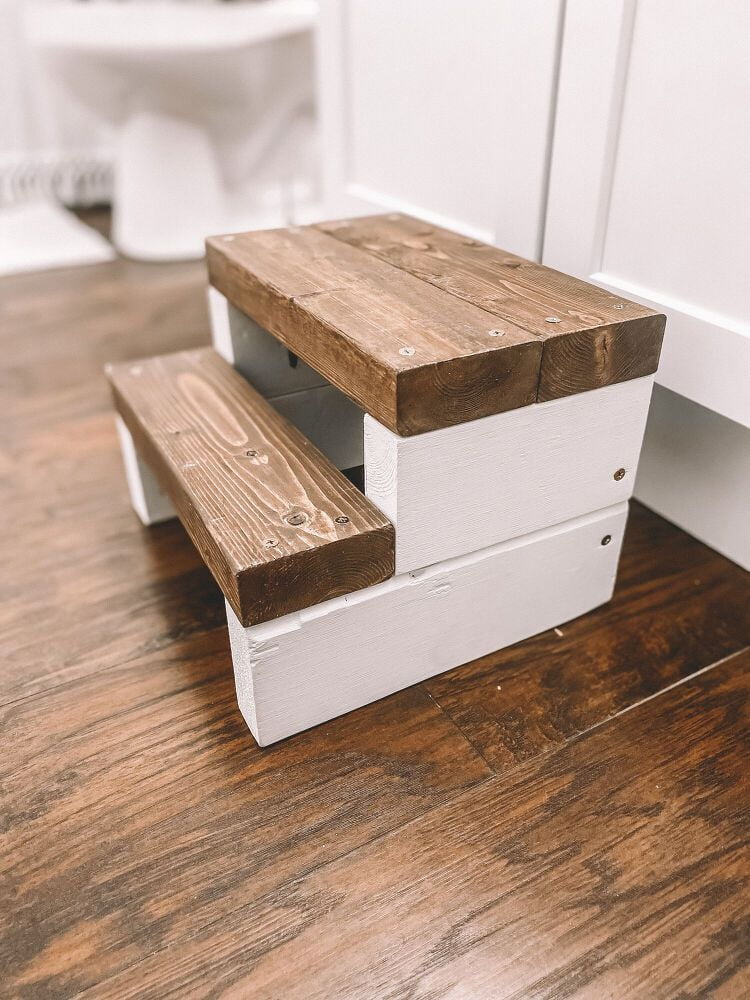Woodworking is a craft that requires precision and accuracy, and selecting the right tools is crucial to achieving successful results. One of the most essential tools for any woodworking project is a power drill. However, choosing the right size power drill can often be a daunting task for beginners and even experienced woodworkers.
The size of the power drill plays a significant role in determining its capabilities and suitability for specific woodworking tasks. In this article, we will delve into the importance of choosing the right size power drill for woodworking and explore the various factors to consider when making this decision.
Understanding the different power drill sizes and their applications is vital in ensuring efficient and effective woodworking. Corded and cordless power drills are two common types available in the market, each with its unique features and benefits. Additionally, power drill chuck size is another important consideration as it determines the compatibility with different drill bits, which are essential for producing various hole sizes in woodworking projects.
When selecting a good size power drill for woodworking, several key factors come into play. The type of projects you plan to undertake dictates the size of drilling bits needed, while considering ergonomics and weight ensures user comfort during extended periods of work. Evaluating power drill specifications such as RPM (Rotations Per Minute), torque rating, and variable speed settings further aids in narrowing down your choices based on specific woodworking needs.
In the succeeding sections of this article, we will discuss popular power drill sizes recommended for woodworking, provide tips on selecting the perfect power drill size for your needs, as well as offer insights into maintaining and caring for your power drill to optimize its performance throughout your woodworking journey. By understanding these aspects, you can enhance your craftsmanship and achieve unparalleled precision in your woodworking projects.
Understanding the Different Power Drill Sizes and Their Applications
Power drills come in various sizes, and it is crucial to understand the differences between them to choose the right one for woodworking projects. This section will explain the varying sizes of power drills and their applications, focusing on corded and cordless drills. Additionally, it will highlight the importance of selecting the correct power drill size for specific woodworking tasks.
Corded vs Cordless Power Drills
One significant difference between power drills is whether they are corded or cordless. Corded drills require a direct connection to an electrical outlet for power, providing a consistent source of energy. They are generally more powerful, making them suitable for heavy-duty woodworking tasks that require drilling through dense materials.
On the other hand, cordless drills operate using rechargeable batteries, offering greater mobility and convenience. They are ideal for smaller woodworking projects or when working in areas without easy access to electricity. While they may not offer the same levels of power as corded drills, advancements in battery technology have made many cordless models quite capable.
The Importance of Power Drill Size
Another critical aspect when considering a power drill for woodworking is its size. The size of a drill refers to its capacity or maximum drilling diameter. Smaller wood screws may require a small-sized drill with less torque, while larger holes or fasteners demand larger-sized drills with higher torque.
It is essential to match the drill size to your specific woodworking tasks. Using a drill that is too small may result in overheating or stalling when attempting more substantial drilling operations. Conversely, using a drill that is too large can make it challenging to control and potentially damage the workpiece.
By understanding the different sizes available and their recommended applications, woodworkers can make informed decisions about which power drill size will best suit their needs.
The Role of Power Drill Chuck Size in Woodworking
The chuck size of a power drill plays a crucial role in woodworking projects. A chuck is the part of the drill that holds the drill bit in place, and its size determines the maximum diameter of the drill bit that can be used with the drill. Understanding the concept of chuck size and its relevance to drilling various hole sizes is essential for woodworkers.
Explaining Chuck Size
Chuck size refers to the diameter of the opening where you insert your drill bit. It is typically measured in inches and can range from as small as 1/4 inch to 1/2 inch or larger. The most common chuck sizes for power drills used in woodworking are 3/8 inch and 1/2 inch.
Choosing Compatible Drill Bits
The chuck size determines which drill bits can be used with a power drill. When selecting a drill bit, it is crucial to choose one that has a shank diameter equal to or smaller than the chuck size. For example, if you have a 3/8-inch chuck, you should use drill bits with shanks that are 3/8 inch or smaller.
It’s worth noting that some power drills come with a keyless chuck, which allows for quick and easy changing of drill bits without the need for an additional tool. However, keyless chucks tend to have lower gripping strength compared to keyed chucks, so they may not be suitable for heavy-duty woodworking tasks.
Key Factors to Consider When Selecting a Good Size Power Drill for Woodworking
When it comes to woodworking, selecting the right size power drill is crucial for ensuring successful and efficient projects. The size of the power drill will directly impact its functionality and ability to handle specific woodworking tasks. Here are some key factors to consider when choosing the perfect size power drill for your woodworking needs.
Firstly, consider the type of woodworking projects you plan to undertake. Different projects require different levels of power and torque from a power drill.
For smaller and more delicate projects such as assembling furniture or drilling small holes, a compact and lightweight power drill with lower RPM (Rotations Per Minute) may be suitable. On the other hand, larger projects such as building cabinets or drilling larger holes in thick wood may require a more powerful and robust drill with higher RPM.
Secondly, take into account the size of the drill bits needed for your woodworking projects. The chuck size of a power drill determines the range of compatible drill bits that can be used. It is important to ensure that the chuck size matches the sizes of drill bits you commonly use for your woodworking tasks. Using improper size bits can lead to inaccurate drilling and potential damage to the workpiece.
Lastly, consider ergonomics and weight when choosing a power drill. Woodworking often involves prolonged periods of drilling, so it is essential to have a comfortable grip that reduces strain on your hand and minimizes fatigue. Additionally, lighter drills are easier to handle, especially when working overhead or in tight spaces.
Considering these factors will help you determine the most suitable power drill size for your woodworking needs.
| Factor | Consideration |
|---|---|
| Type of Woodworking Projects | Different tasks require varying levels of power and torque from a power drill. |
| Size of Drill Bits | The chuck size should match the sizes of drill bits commonly used for woodworking. |
| Ergonomics and Weight | A comfortable grip and lightweight design are important for user comfort. |
Evaluating Power Drill Specifications and Features for Woodworking
When it comes to woodworking, having the right power drill with the appropriate specifications and features is crucial. The performance of a power drill can greatly impact the quality of your woodworking projects. Therefore, it is important to understand and evaluate the different specifications and features before making a purchase.
One important specification to consider is RPM or Rotations Per Minute. The RPM indicates how fast the drill bit rotates while drilling. For woodworking, a higher RPM is generally preferred as it allows for faster drilling and smoother finishes. However, it is important to note that some softwoods may require lower RPM settings to prevent splintering or burning.
Another key specification is torque rating. Torque refers to the twisting force generated by the drill when in use. In woodworking, different wood densities require different levels of torque. Harder woods such as oak or maple may require a higher torque rating to effectively drill through them, while softer woods like pine may require less torque.
Variable speed settings are also an important feature to look for in a power drill for woodworking. Being able to adjust the speed allows for more precision when drilling holes or driving screws in delicate materials. It also gives you greater control over the tool, reducing the risk of damaging your workpiece.
In addition to these specifications and features, it is important to consider other factors such as ergonomics and weight. A comfortable grip and lightweight design can significantly enhance user comfort during prolonged use.
By carefully evaluating power drill specifications such as RPM, torque rating, variable speed settings, as well as considering factors like ergonomics and weight, you can select a power drill that meets your specific woodworking needs and enhances your craftsmanship. Take the time to research and compare different models before making a decision, ensuring that you have chosen the perfect power drill for your woodworking projects.
Popular Power Drill Sizes Recommended for Woodworking
When it comes to woodworking, having the right size power drill is essential for achieving precise and efficient results. There are several popular power drill sizes that are recommended for woodworking projects, each with their own advantages and limitations. Understanding these sizes and their applications can help you select the perfect power drill for your woodworking needs.
1. 3/8-inch Power Drill: This is one of the most common power drill sizes used for woodworking tasks. It is versatile enough to handle a wide range of projects, including drilling pilot holes, screwing in screws, and small to medium-sized drilling tasks. The 3/8-inch chuck size allows for compatibility with various types of drill bits, making it a reliable option for general woodworking tasks.
2. 1/2-inch Power Drill: If you often work with larger wood pieces or need more power for drilling through dense or hardwoods, a 1/2-inch power drill may be the better choice. With a larger chuck size, it can accommodate larger drill bits which allows for drilling larger holes or using hole saws for woodworking projects that require precision and durability.
3. 1/4-inch Power Drill: A 1/4-inch power drill is commonly used for lightweight and delicate woodworking tasks such as installing hardware or attaching trim pieces. It is smaller in size and weight compared to the other two options mentioned above, making it easier to maneuver in tight spaces or when working on intricate details.
It’s important to note that while these three power drill sizes are commonly recommended for woodworking, there are other sizes available on the market as well. Ultimately, the ideal size will depend on your specific projects and preferences. Consulting experienced woodworkers or trying out different power drills in-store can give you a better sense of which size feels comfortable in your hand and suits your needs.
Having the right size power drill is just one piece of the puzzle when it comes to successful woodworking. In order to enhance your craftsmanship and achieve optimal performance, it’s also important to maintain and care for your power drill properly.
Regular cleaning, lubrication, and checking for worn-out parts can help prolong the lifespan of your power drill and ensure that it performs at its best when you need it most. By choosing the right size power drill for woodworking and maintaining it well, you can take your woodworking skills to new heights.
Tips for Selecting the Perfect Power Drill Size for Your Woodworking Needs
Selecting the perfect power drill size for your woodworking needs can greatly enhance the precision and efficiency of your projects. Here are some tips to help you make the right choice:
- Consulting experienced woodworkers: One of the best ways to determine the ideal power drill size for woodworking is by seeking recommendations from experienced woodworkers. They have hands-on experience with different drill sizes and can provide valuable insights based on their own projects and preferences.
- Trying out different power drill sizes in-store: Another helpful tip is to visit a hardware store or supplier that offers a wide range of power drills. Take the time to try out various sizes and models to get a feel for their handling, balance, and overall comfort. This will give you a better understanding of which size suits your grip and working style.
- Considering project requirements: As mentioned earlier, the type of woodworking projects you plan to undertake is an important factor in selecting the right power drill size. For small-scale projects or delicate tasks, a smaller drill may be sufficient, while larger projects may require a more powerful drill with a larger chuck capacity.
It’s also important to consider ergonomics and weight when choosing a power drill size for woodworking. A heavy or poorly balanced drill can cause fatigue and affect your overall control, leading to less accurate results. Therefore, it’s advisable to choose a drill that feels comfortable in your hand and doesn’t strain your arm or wrist during extended use.
| Tips for Selecting the Perfect Power Drill Size for Your Woodworking Needs |
|---|
| 1. Consulting experienced woodworkers |
| 2. Trying out different power drill sizes in-store |
| 3. Considering project requirements |
Maintaining and Caring for Your Power Drill for Optimal Woodworking Performance
When it comes to woodworking, having a reliable power drill is essential. However, simply choosing the right size power drill is not enough; proper maintenance and care are also crucial for optimal performance. Taking care of your power drill will not only extend its lifespan but also ensure that it operates efficiently and effectively. In this section, we will discuss some important tips for maintaining and caring for your power drill.
1. Regularly cleaning and lubricating the drill: Dust, debris, and sawdust can accumulate in the crevices of your power drill, affecting its performance over time. It is important to clean your power drill after each use to prevent clogging and maintain functionality.
You can use a small brush or compressed air to clean the exterior and remove any debris from the chuck area. Additionally, lubricating the moving parts of your power drill with a light machine oil can help reduce friction and keep it running smoothly.
2. Storing the power drill properly: When you are done using your power drill, make sure to store it in a safe and dry place. Moisture can cause damage to the internal components of the drill, leading to rusting or malfunctioning. Consider investing in a sturdy carrying case or toolbox specifically designed for storing your power tools to protect them from dust, moisture, and accidental damage.
3. Checking and replacing worn-out parts: Over time, certain parts of your power drill may wear out or become damaged due to regular use. It is important to regularly inspect these parts, such as the chuck or batteries (for cordless drills), and replace them if necessary. Using worn-out parts can affect the overall performance of your power drill and compromise its safety.
By following these maintenance tips, you can ensure that your power drill remains in top working condition for all your woodworking needs. Remember that proper care not only enhances the performance of your power drill but also contributes to the quality of your craftsmanship.
Conclusion
In conclusion, selecting the right size power drill is crucial for enhancing your craftsmanship in woodworking. As discussed throughout this article, understanding the differences between corded and cordless drills and the importance of power drill size for specific woodworking tasks is essential. Additionally, considering the role of chuck size and compatibility with drill bits, as well as key factors like the type of projects you plan to undertake and user comfort, can further guide you in making the right choice.
Evaluating power drill specifications and features such as RPM, torque rating, and variable speed settings is important for precision woodworking. By carefully assessing these factors, you can ensure that your power drill is capable of efficiently drilling through different wood densities while maintaining control and accuracy.
When it comes to popular power drill sizes recommended for woodworking projects, it is important to consider their advantages and limitations for specific tasks. Seeking recommendations from experienced woodworkers can provide valuable insights into which sizes are favored by professionals in different situations. Additionally, trying out potential power drills in-store before making a purchase will give you a better understanding of their handling and comfort levels.
To maintain optimal performance, regular cleaning, lubrication, and proper storage are necessary for your power drill. Checking for worn-out parts and replacing them when needed ensures efficient functioning. By taking care of your power drill, you not only prolong its lifespan but also improve its overall performance.
To truly enhance your craftsmanship in woodworking, selecting the right size power drill plays a crucial role. Through careful consideration of all the factors discussed in this article – from understanding different sizes and their applications to evaluating specifications – you can make an informed decision that will contribute to successful woodworking outcomes.
So remember, choose wisely when it comes to your power drill size – it’s an investment that will pay off in enhancing your skillset and mastering every project you tackle.

Hi everyone! I’m a woodworker and blogger, and this is my woodworking blog. In my blog, I share tips and tricks for woodworkers of all skill levels, as well as project ideas that you can try yourself.





